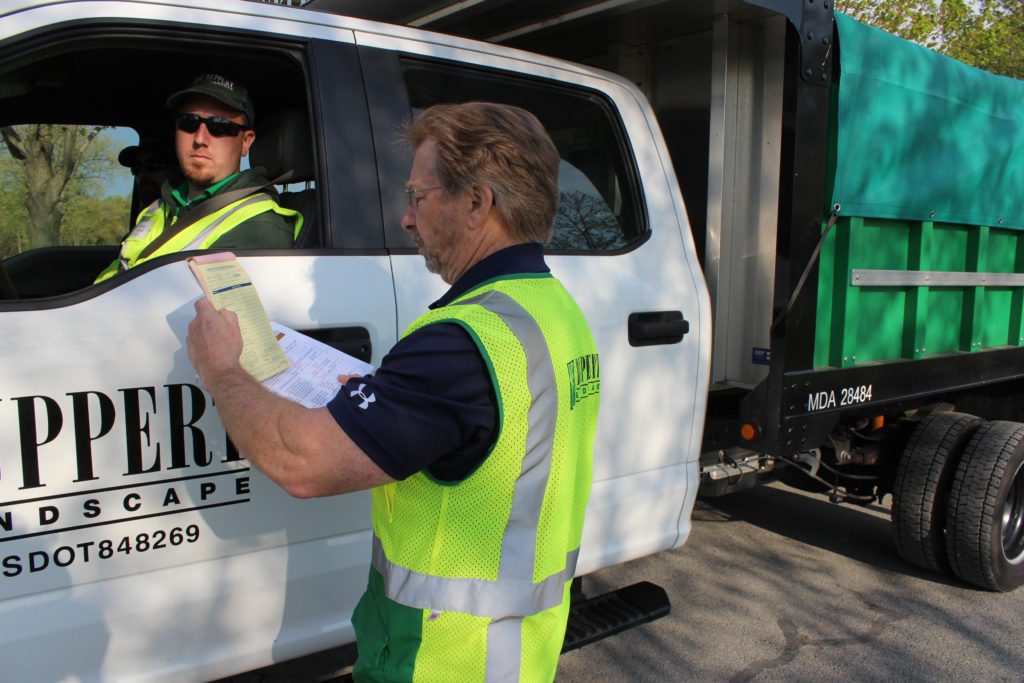By Adrian Karver, Regional Safety Manager
 Based on what we do, our line of work poses certain safety risks – whether we’re working on an active construction site or high-traffic area, operating small or heavy equipment, or driving production vehicles. Accidents and injuries are bound to happen, and our goal is to prevent and minimize them to the greatest extent possible and to treat them promptly and thoroughly when they do occur. Our greatest tool in minimizing accidents and incidents is building and maintaining a strong safety culture. This includes reporting any injury or incident claims timely and accurately so that we can get the right treatment for our employees and repair any damages for our clients and the public.
Based on what we do, our line of work poses certain safety risks – whether we’re working on an active construction site or high-traffic area, operating small or heavy equipment, or driving production vehicles. Accidents and injuries are bound to happen, and our goal is to prevent and minimize them to the greatest extent possible and to treat them promptly and thoroughly when they do occur. Our greatest tool in minimizing accidents and incidents is building and maintaining a strong safety culture. This includes reporting any injury or incident claims timely and accurately so that we can get the right treatment for our employees and repair any damages for our clients and the public.
While this should be standard practice, I’d like to take this opportunity to remind our team of the proper reporting steps and expectations for common types of injuries and incidents we see on the job.
Employee Injury
 The biggest issue we’re seeing here is employees not reporting injuries when they occur. They might think it’s just a small injury that will resolve itself and isn’t worth reporting. This often leads to injuries being reported days or weeks later once the injury has worsened, which is something we want to avoid at all costs. It may take time out of your day to follow these steps, but it’s well worth the time to ensure the well-being of our team members.
The biggest issue we’re seeing here is employees not reporting injuries when they occur. They might think it’s just a small injury that will resolve itself and isn’t worth reporting. This often leads to injuries being reported days or weeks later once the injury has worsened, which is something we want to avoid at all costs. It may take time out of your day to follow these steps, but it’s well worth the time to ensure the well-being of our team members.
When an employee reports any type of injury, the first step is to determine the severity of the injury.
Severe/Life Threatening: Injuries of this nature involve loss of consciousness, severe bleeding, head injury, or signs of medical distress such as heart attack or stroke. Call 911 immediately and stay on the line until EMT’s arrive at the scene. Once the employee is in the care of EMT’s, notify their manager and/or the branch Safety Rep, then call Dr. Blink at 855-365-2431 to let them know the situation.
Non-Life Threatening: For less severe/ non-life-threatening injuries, notify your manager and/or the branch Safety Rep, then call Dr. Blink with the employee at 855-365-2431. Dr. Blink is a 24-hour hotline and the doctors and nurses that staff the line will document the information and determine the best course of care for the employee at that moment. This will help us:
- Get the proper treatment for the employee
- Gather information on what happened and when so we can manage the claim from the first hour
- Prevent further complications or worsening injury and avoid lost work time
- Consult with the clinic at the time of treatment on a professional level
- Ensure better management of the claim long-term
- Provide the best treatment and follow-up plan for the employee
This can only happen if we engage Dr. Blink at the time of the injury, not the next day or beyond. Again, this is why it’s vital to report all injuries, no matter how minor, at the time they occur.
For all injuries, the next step beyond initial care is to fill out the Injury Report form as completely as possible. This report is ideally filled out by the Field Manager with the assistance of their Area Manager. Once completed, the report needs to be scanned and emailed to our Safety Team: Dave Sanders, myself, Lauren Dugan, and Alex Marshall, with a copy sent to the Branch Manager, Branch Safety Rep, and Region Manager.
Auto Accident
When we have an auto accident, the first step is to determine if there are injuries in our vehicle or other vehicles involved. If our employees are injured, use the reporting process as outlined above to address the injuries. Once any injuries have been addressed, the next step is to notify your direct manager of the situation and begin to fill out our internal Auto Accident Report. If the accident involves a non-Ruppert vehicle(s), then we need to contact local police so they can report to the scene and complete a police accident report. If our vehicle is damaged too badly to get back to the office safely under its own power, then coordinate with the branch Shop Manager to have the vehicle towed. The Auto Accident Report is ideally f illed out by the Field Manager/driver with the assistance of their manager. Once completed, the report needs to be scanned and emailed to the Safety Team as listed above no less than 24 hours following the incident.
General Liability & Theft
The first step following a general liability or theft incident is for the Field Manager to report it to their Area Manager, who will then notify the Branch Safety Rep & Branch Manager. The Field Manager for the crew that did the damage/had the theft will fill out the General Liability Report with the assistance of their Area Manager as needed. Once completed, the report and photos need to be scanned and emailed to the Safety Team as listed above no less than 24 hours following the incident/theft.
For each of these types of incidents, the initial reporting is the beginning of a process that can include further investigation, follow-up, doctor visits, communication with insurance companies, coordinating repairs, and training/ retraining employees so we can avoid repeating the same incidents. But the key is making sure we report any/all occurrences immediately so that we can be as responsive as possible and provide the best care for our team members. Learning from the injuries and incidents we experience as a company helps us continuously build and improve our safety culture. Stay safe out there!